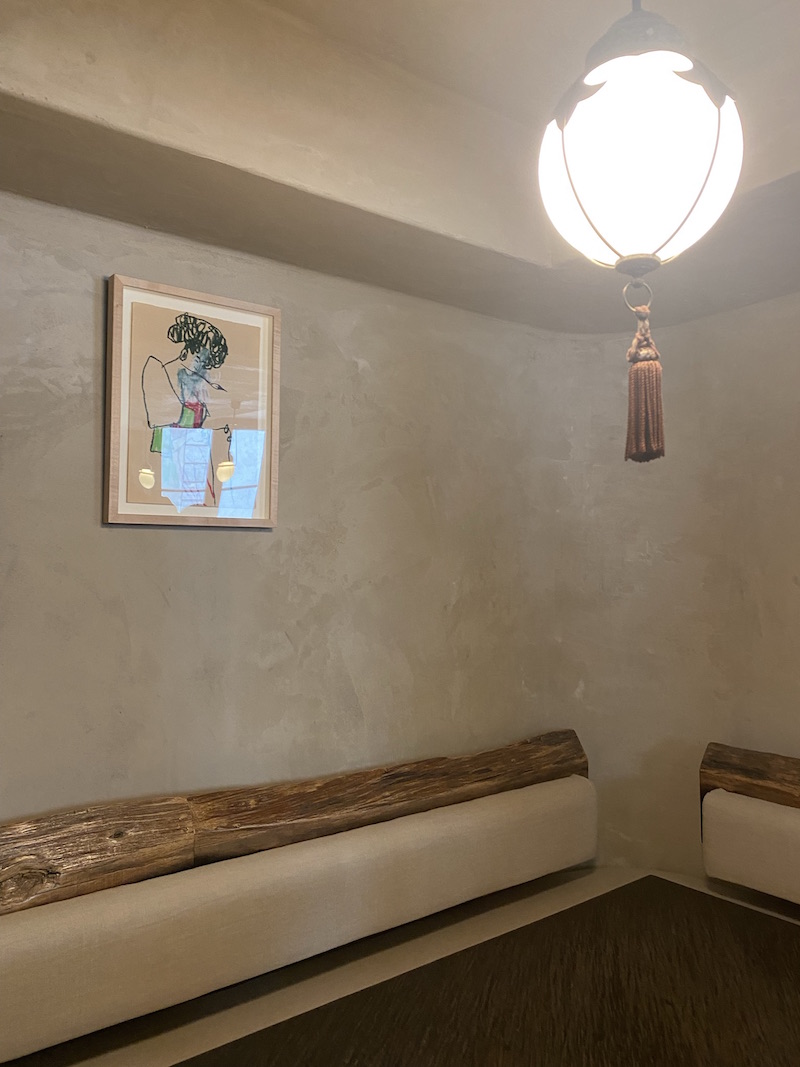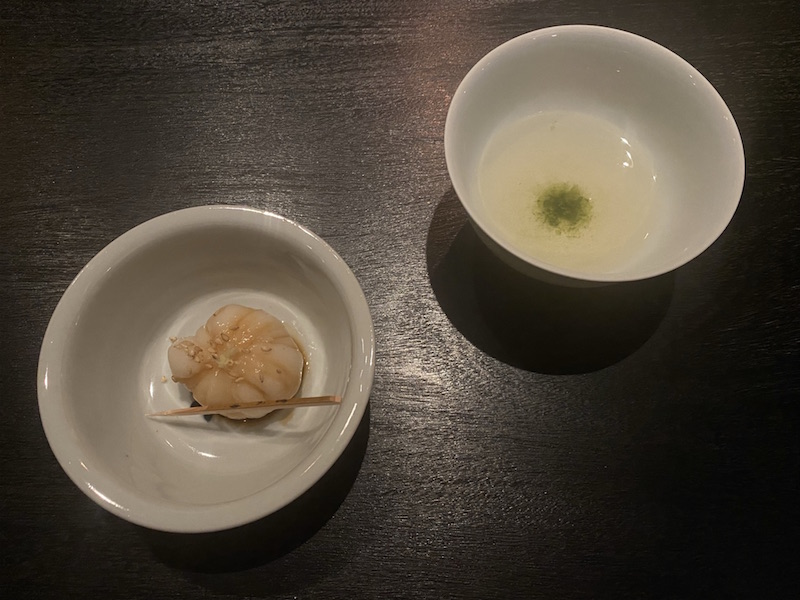OGATA Paris: Japanese house of tea and omotenashi designed for contemporary taste
La maison OGATA Paris is the epitome of wabi rusticity where perfect simple lines of beauty merge with the old spirit of the Marais artistic zeal. There is nothing of its kind in France, perhaps in the entire Europe. Opening during perhaps the most difficult time in recent history has not defied the years-lasting project. The constant flow of refined customers swells in, and the organised blend of Japanese and French staff keeps the reservation book filled with returning names appreciative of its omotenashi hospitality seamlessness.



In sensible hands, this Marais hôtel particulier was transformed into a contemporary, minimalistic, Japanese cultural sanctuary that engages all senses. Your palate and olfactory indulgence will be baptised into the japanology that so many Westerners revere with a silent arigato. Earthly pleasures of tea, seasonal vegetables and fruits, meet in the visual feast of dining ware designed by Shinichiro Ogata, the founder of Simplicity in Tokyo. I confess, I have been a faithfully excited fan of Mr.Ogata’s design ever since I dined, shopped and sipped on tea, sake and cocktails at his tea rooms in Ginza, Aoyama and his first restaurant Higashiyama in the residential cherry blossom mecca in Meguro, Tokyo. All of his interior design feels as if forgotten in time, a patina that is still very present.
OGATA Paris is a natural continuation of a success story filled with passion for one’s own culture.


The SABO tea room underground at OGATA Paris leads you deep down into the inner world of its own mystery. Steaming water pots await your fill of freshly steeped tea. Stone walls of Le Marais combined with the walls’ monastic simplicity characteristic of Mr Ogata’s design and comfort of wooden tables and the long tea bar, may keep you in for hours. We patiently sipped four teas at one occasion. Directed by an experienced tea master, Katsuhito Imaizumi, whom we had met at Sakurai Tea Experience in Tokyo previously, this is not a sealed lips chanoyu, but a calm social encounter celebrating the grail of Japanese culture, its tea service.




You can try additional teas from the broadly selected repertoire, just ask the master for his recommendations based on your taste preferences. From typical sencha (steamed tea, we had Kamairicha Yabukita from the Miyazaki prefecture famous for its beef), high end gyokuro (more shaded green tea), freshly roasted houjicha (over fire at the bar in front of you) to semi-oxidised oolong (Hoshucha Minamisayaka), seasonal infusion (such as ripe peaches we had over a sencha) and fermented tea in the style of Chinese pu-erh. While you can just order a la carte, matcha whisked to frothy perfection closes off most of the preset experiences at the Sabo tea room. Observing the gentle hands of the tea master as he laddles out the hot water from a pot into lidded cups, his sensibility for timing sequentially multi-brews (three is maximum for most teas), while keeping his workspace impeccably neat, is an act of meditative presence. While sharing with a friend feels nice, coming alone heightens the profundity.



During summer, traditional Japanese kagikori, hand-shaved ice with a choice from one of the three flavours – matcha sweetened with condensed milk, houjicha with roasted buckwheat (soba) or summer peach. We tried the latte-like matcha and the even better roasted houjicha frosty mountains of icy treats. On a rainy day we felt like roasted tea. In the hands of the tea master, the earthen pot emanates roasted hay fragrance of the stems and leaves of houjicha. When we visited recently there were two types – more stems like in the Kagoshima Kuki or more leaves as we had in the Saitama Yume.


You can reserve a plant-based bento lunch (Hiruzen) at Sabo (Wed-Sun 12-3pm) paired with three teas or a bit more elaborate casual meal (vegetarian, fish or meat choice of the main course) at the more lively restaurant upstairs (open also for dinner). There, a large counter around the kitchen action, a long common dining table and a more private wall-side booth, offer diversity of privacy and experience. Either way, your meal starts with cold-brewed green tea, is accompanied by miso soup, japanese pickles, steamed rice and ends with wagashi. At Sabo, the choice of sweets is more extensive and the accent on the tea is more pronounced.


The food at Ogata is good, not as impeccable as at all the Tokyo branches though, perhaps due to a struggle with ingredients in a foreign land? What shines though, next to the top quality Japanese teas, are the wagashi sweets. My favourite is the roasted sesame powder – kinako – dusted doughy ball filled with luscious balsamic-textured ganache (honwarabi). One can always go safe with adzuki beans (Mame Daifuku), a staple in the sweets selection, but seasonal specialties like persimmon in late fall, cherries and strawberries in June, peaches in July pop only for short periods on the menu, so I would recommend not missing your opportunity. I went for the sticky gluten dumpling with warabi fiddlehead fern wrapped in a bamboo leaf. At OGATA you get by far the best Japanese wagashi in Paris, but to go also the paper-thin wafers (monaka) filled with sweet paste, puffed caramelised rice (okoshi) and Japan meets the West fusions such as chocolate cake spiced with sansho pepper and cheesecake with sake lees. The locally established, traditional Japanese tea rooms serving wagashi like Toraya or Pâtisserie Tomo offer slightly less refined pieces.



The small bar is only opened in the evenings, hence we have not tried any cocktails (count with the finest Japanese whisky and sake), but I will certainly stop by when in the vibrant area later in the day. Embodied in this design hôtel particulier, Paris finally offers an authentic yet contemporary Japanese omotenashi experience in its most wholesome shape.
The four spaces – tea room, boutique (also take away tea, wagashi and Japanese snacks in the window), bar and restaurant – cater to any whim of the day or night a fan of genuine japonisme may desire. Think of an Aesop boutique filled with edible delicacies and kitchen-centric ware instead of fragrant creams and shower gels. Yet, here beyond the design grazing, one can also learn plenty about the Japanese art of tea at regular “Ateliers” organised in-house, share an immersive experience or just escape from the city buzz in solitude.

